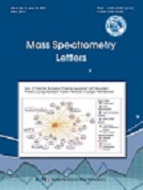
- P-ISSN 2233-4203
- E-ISSN 2093-8950

A gas chromatography/ mass spectrometric (GC/MS) method was developed as a candidate reference method for theaccurate determination of essential fatty acids (linoleic acid, α- and γ-linolenic acids) in food supplemental oil products. Sampleswere spiked with three internal standards (stearic acid-d35, 13C18-linoleic acid, and 13C18-α-linolenic acid). Samples were thensubject to saponification, derivatization for methylation, and extraction by organic solvent. For GC/MS measurement, an AgilentHP-88 column, designed for the separation of fatty acid methyl esters, was selected after comparing with other columns as it providedbetter separation for target analytes. Target analytes and internal standards were detected by selected ion monitoring ofmolecular ions of their methyl ester forms. The GC/MS method was applied for the measurement of three botanical oils in NISTSRM 3274 (borage oil, evening primrose oil, and flax oil), and measurement results agreed with the certified values. Measurementresults for target analytes which have corresponding isotope-labeled analogues as internal standard were calculated basedon isotope dilution mass spectrometry (IDMS) approach, and compared with results calculated by using the other two internalstandards. Results from the IDMS approach and the typical internal standard approach were in good agreement within their measurementuncertainties. It proves that the developed GC/MS method can provide similar metrological quality with IDMS methodsfor the measurement of fatty acids in natural oil samples if a proper fatty acid is used as an internal standard.
Stránský, K. S. (2005). . Food Chem, 92, 569-.
Sanders, L. (2009). . Lipid Technol, 21, 7-.
Christie, W. (1999). . Industrial Crops Products, 10, 73-.
Traitler, H. (1984). . Lipids, 19, 923-.
Brondz, I. (2002). . Anal. Chim. Acta, 465, 1-.
Chen, S.-H. (2002). . Anal. Chim. Acta, 465, 145-.
Laakso, P. J.. (1997). . AOCS, 74, 1291-.
Lacaze, J.-P. C. L. (2007). . J. Chromatography A, 51, 1145-.
De Leenheer, A. P. (1992). . Mass Spectrom. Rev, 11, 249-.
De Bièvre, P.. (1993). . Anal. Proc, 30, 328-.
Shin, H. (2013). . Food Chem, 138, 1109-.
Lee, J. (2013). . Anal. Chim. Acta, 787, 132-.
Lim, Y. O. (2011). . Food Chem, 126, 1393-.